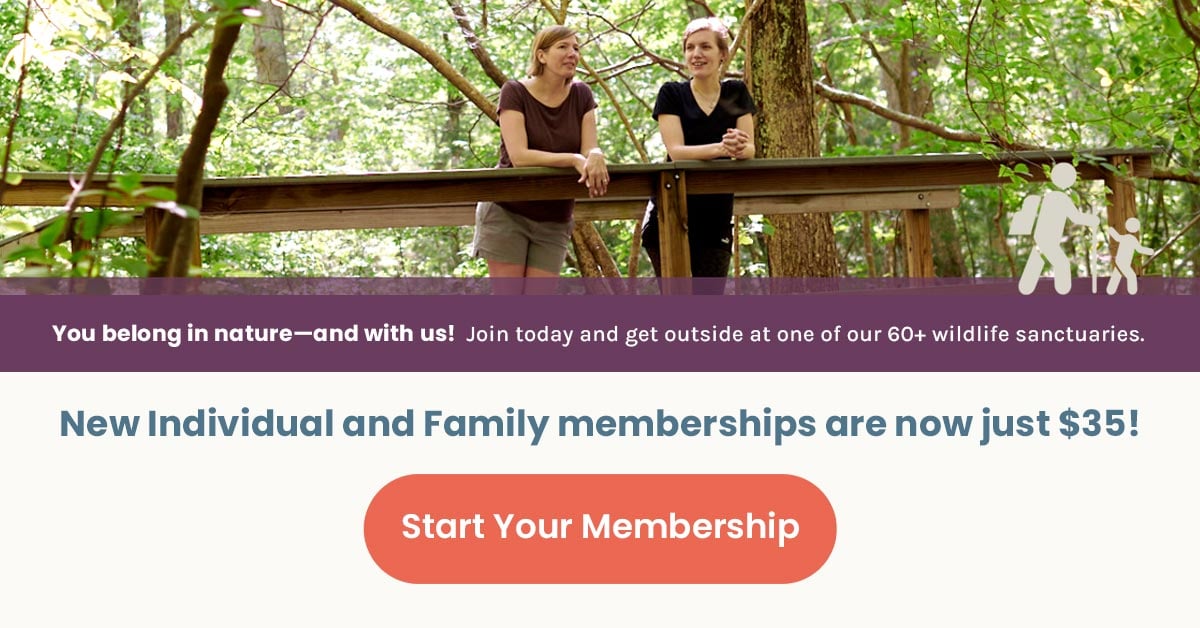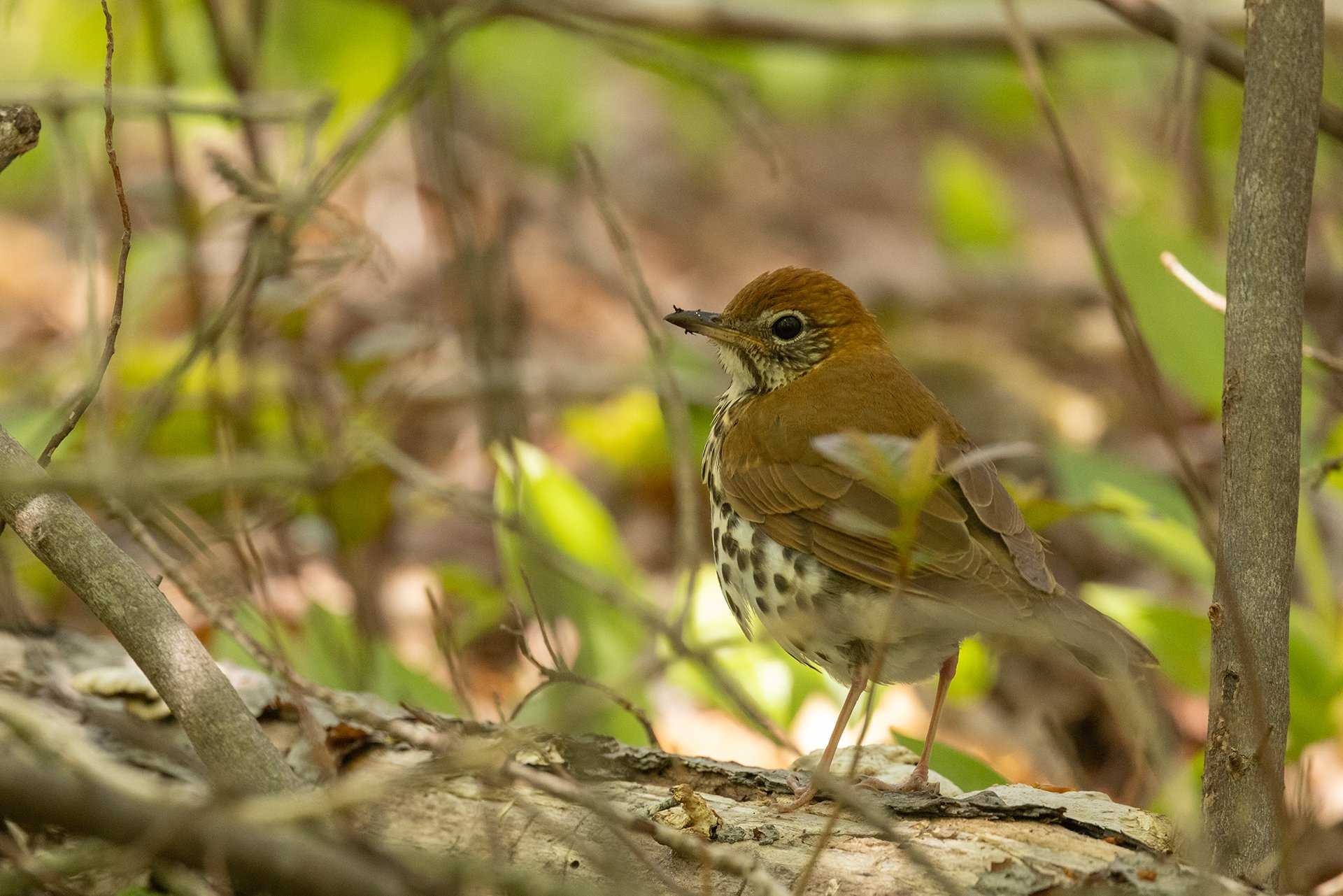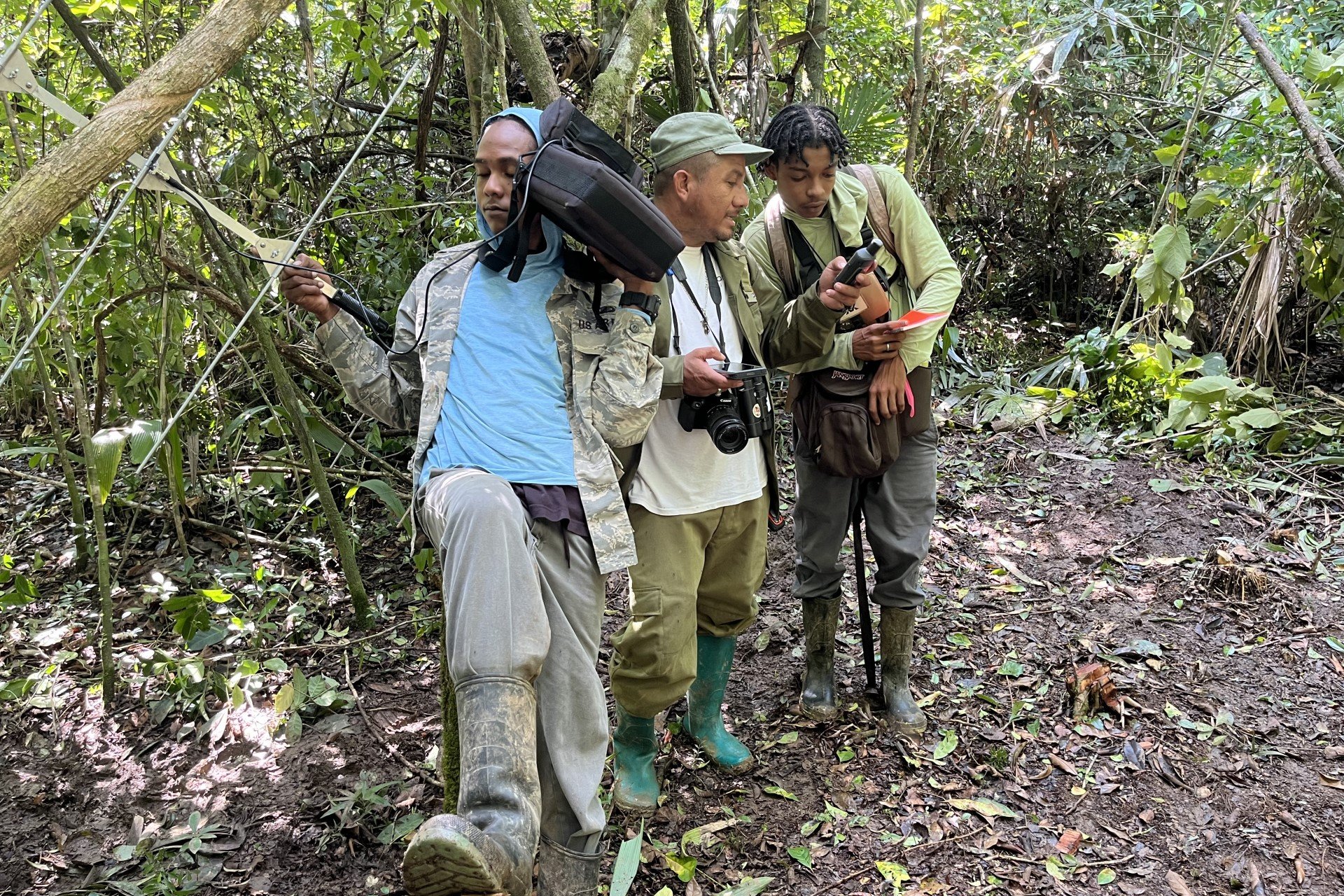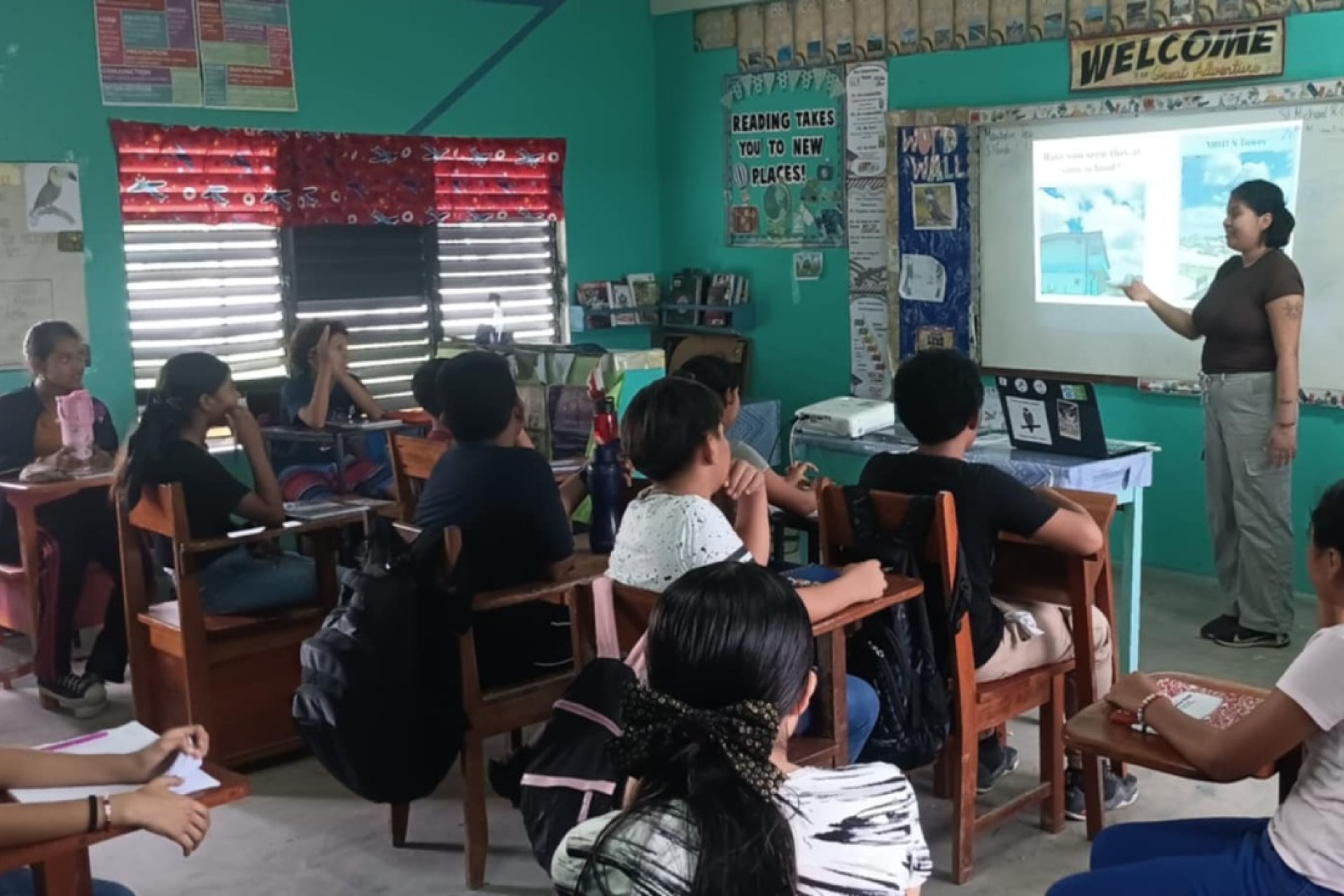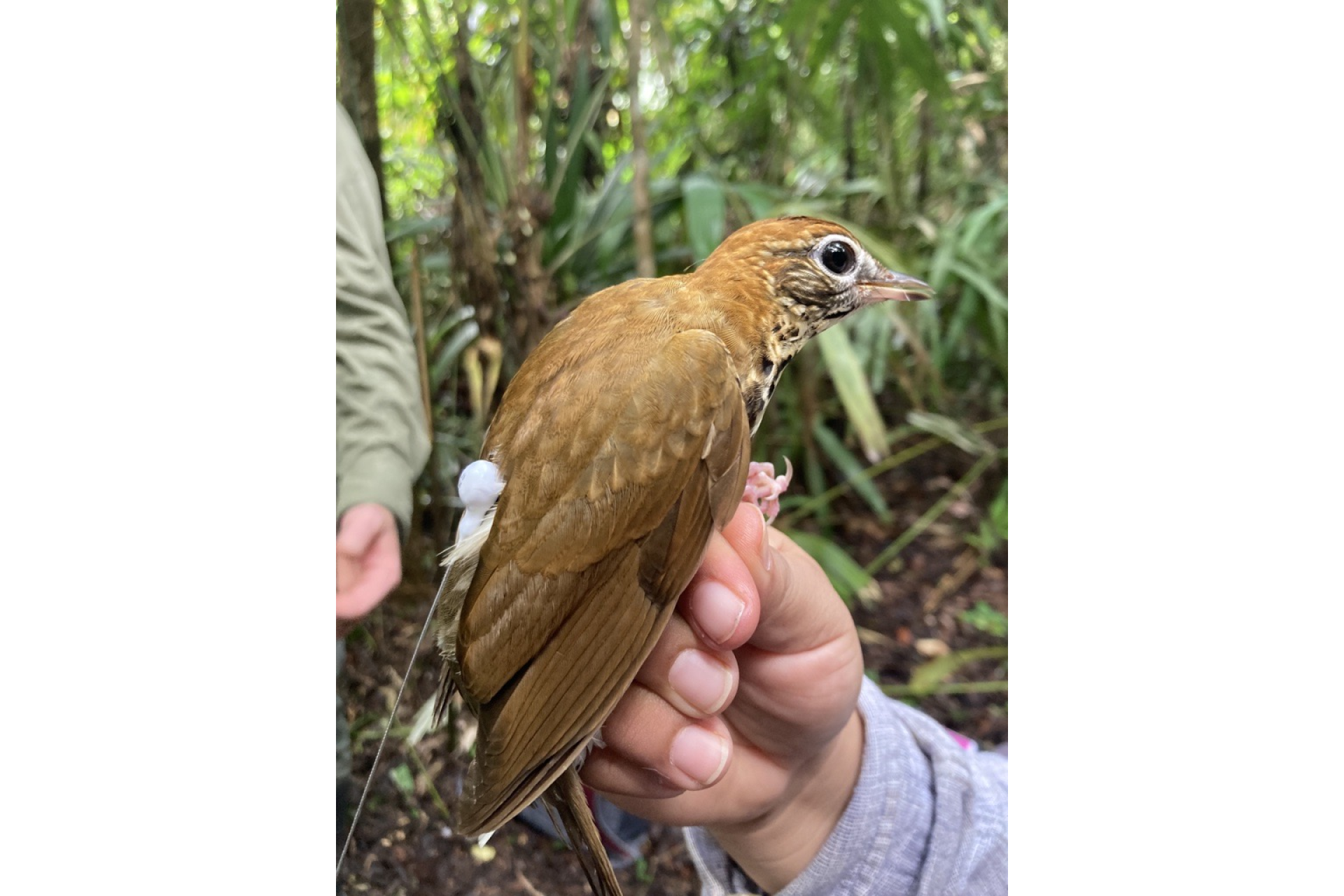Unlocking the Secrets of Transnational Wood Thrush Migration
April 07, 2025
Each spring, the Wood Thrush’s song floats through the forests of Massachusetts. But where do these beloved birds go when summer fades? Thanks to cutting-edge tracking technology and international partnerships, Mass Audubon is uncovering the secrets of their incredible journey—one that connects people and places across thousands of miles, from New England to Central America.
Understanding the Migratory Wood Thrush
The Wood Thrush—a familiar songbird in Massachusetts forests—embarks on a remarkable migration each year. After just three months of nesting in eastern North America, these birds travel thousands of miles south, spending winter in tropical forests from Mexico to Panama. Yet much of this journey remains a mystery, creating challenges for conservation efforts along their migratory route.
By widening our scope to understand its yearly habits, we can learn more about the threats and conservation needs of Wood Thrush—and other songbirds—when they are not in Massachusetts.
How Tiny Tech Makes a Big Impact
To understand where Wood Thrush go and what habitats they rely on, we use tiny, lightweight radio tags—each just slightly heavier than a paperclip. Working closely with our partners Programme for Belize, we safely attach these radio tags and re-release the birds. These tags then send out signals that are detected by hand-held receivers and receiver stations, helping scientists track the birds' movement for analysis.
Partners at Programme for Belize tracking Wood Thrush with an antenna through the tropical forest.
While the birds spend the winter in Belize, our local partners track their movements from the ground—carrying receivers in the forest to get more accurate data. After finding a tagged Wood Thrush, they’ll note nearby habitat characteristics, including how dense the forest vegetation is, how deep the leaf litter is, how many larger trees are nearby, and the presence of food. Comparing these notes to randomly selected places in the forest tells our researchers what features the birds prefer, which will inform future habitat management plans.
During their migration, receiver stations with powerful antennas throughout the migratory path capture signals from our tags (and those from other projects and species) as birds pass by. A broad network of stations exists throughout North America, including at Ipswich River in Topsfield, Drumlin Farm in Lincoln, and Wachusett Meadow in Princeton. In Central America, receiver sites are increasing; Mass Audubon has installed three new stations around the project area in Belize, including at a local grade school where bird study and the tracking data has been incorporated into lesson plans.
Bird Conservation Fellow Abigail Garcia instructs school children in Belize about migratory birds like Wood Thrush.
Exciting Updates from Abroad
Tracking Wood Thrush over two migratory periods has provided some exciting news. Six birds originally tagged in Massachusetts, including three from Mass Audubon wildlife sanctuaries, were detected by our partners in Belize, nearly 2,000 away.
Birds don’t just connect forests—they connect people too. This year, a Wood Thrush originally detected at the school with a receiving station in Belize was also tracked at a school in Pennsylvania! Students at both schools are now learning about each other’s landscapes and the birds they share, building a conservation connection across countries.
Tracking data is publicly viewable on the Motus website, so you too can make a connection with the birds that are arriving back to their nesting grounds over the coming months.
Wood Thrush fitted with a radio tag.
Threats Facing Wood Thrush
Wood Thrush have exhibited a significant decline in numbers over the past 50 years, and they are considered a priority species for conservation. The biggest threats? Habitat loss and poorly managed forests—both in New England and in their wintering grounds.
Mass Audubon is working to combat these threats by protecting large tracts of forest land for people and wildlife, with the goal to protect 30% of Massachusetts by the year 2030. Improved forest management on their local breeding grounds will also be a critical component of Wood Thrush conservation, spearheaded by our Foresters for the Birds program.
However, perhaps the greatest unknown is still the details of Wood Thrush habitat during migration and the winter months. Data gathered from our partners will provide these details and help design initiatives that ensure Wood Thrush can survive and return for another successful breeding season.
How You Can Help Protect Wood Thrush
This is just the beginning! As Wood Thrush return north this spring, new tracking data will reveal even more about their incredible journey. Follow their migration, visit a wildlife sanctuary to see them yourself, and support our conservation efforts to help protect these beloved birds.
Stay Connected
Don't miss a beat on all the ways you can get outdoors, celebrate nature, and get involved.


